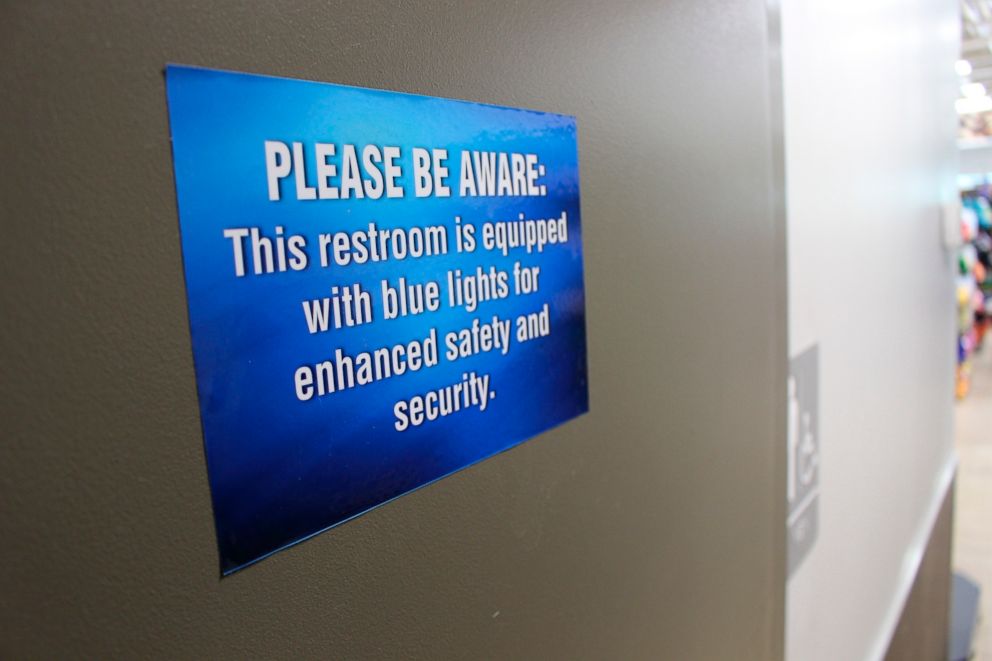How blue lights can help drug users from getting high
Blue lights on skin make it harder to see surface veins.
As the “War on Drugs” declared by former President Nixon in the 1970s staggers on, science and governments look for novel ways to combat drug use, particularly opioids. The latest: blue lighting in the bathrooms of public places.
What are “blue lights”?
Blue lighting isn’t hard to achieve: blue bulbs are commonplace and can be purchased from different vendors, including online. They can be relatively inexpensive and give off a fluorescent-like glow.
Why use blue?
Blue lights on skin make it harder to see surface veins. A room lit with blue lighting is darker than regular white lighting. Because veins are harder to see with blue lighting, it becomes harder for the user to inject. This is particularly true for some women and long-term injection drug users, who tend to have smaller, more-difficult-to access veins.
Where are people using them?
Some establishments are installing blue lights in public areas to discourage injection drug use.

Is there any harm in using them?
Those in favor of blue lights feel they may discourage drug use or encourage injecting in a safer manner, such as going to places like supervised injection facilities. Opponents point out that their use could be more dangerous to injectors; it could encourage more high-risk injecting practices (such as injecting into a muscle or deep vein) and potentially cause fatal medical complications. Critics also argue that supervised injection facilities aren’t available everywhere and that blue-lit areas could lead addicts to move elsewhere, such as playgrounds. Moreover, blue lights could potentially cause falls for people who don't see well.
Are there alternatives to blue lights?
Opponents say using blue lights is a way to distract from other proven strategies to reduce or deter drug use, such as universal access to medically assisted treatment, use of supervised injection facilities with appropriate needle disposal and the availability of affordable, secure housing. They feel this is another effort to shame drug use, instead of treating it as a medical problem.
Some critics have even called the use of blue lights an “act of violence” against injection drug users. They point to studies showing blue lights may not actually deter a determined user who may employ strategies like prepping drugs in syringes before going into a bathroom or bringing in lighters or candles to see their way. Other studies show some IV drug users actually support business owners’ rights to use blue lights as a way to cut down on injection drug use.
Petrina Craine is a resident physician affiliated with Alameda County Medical Center working in the ABC News Medical Unit.




